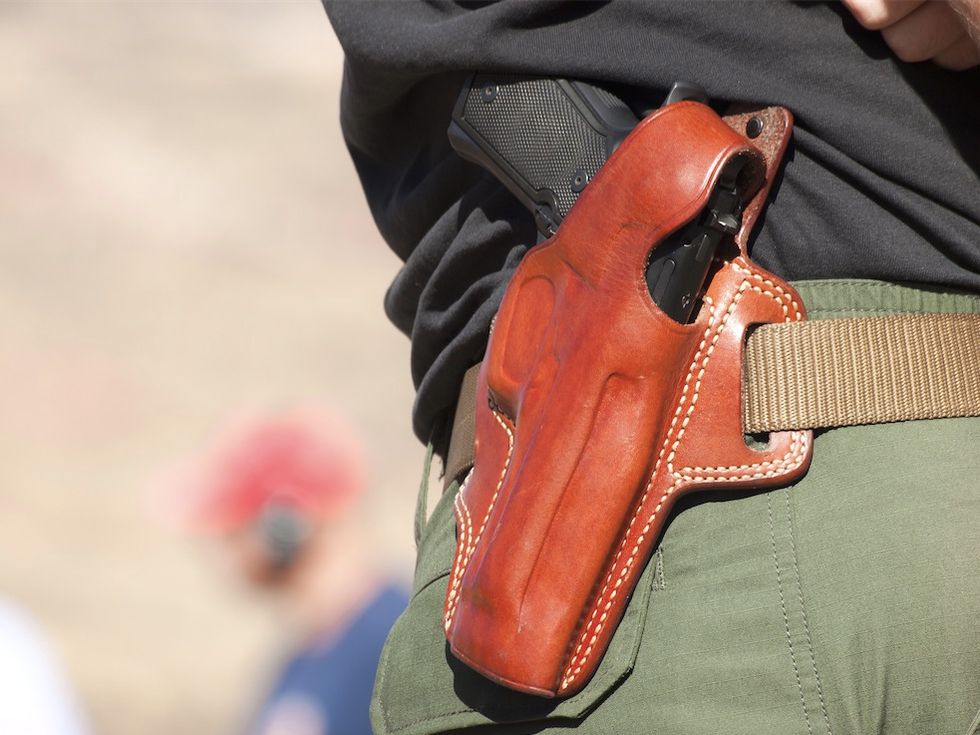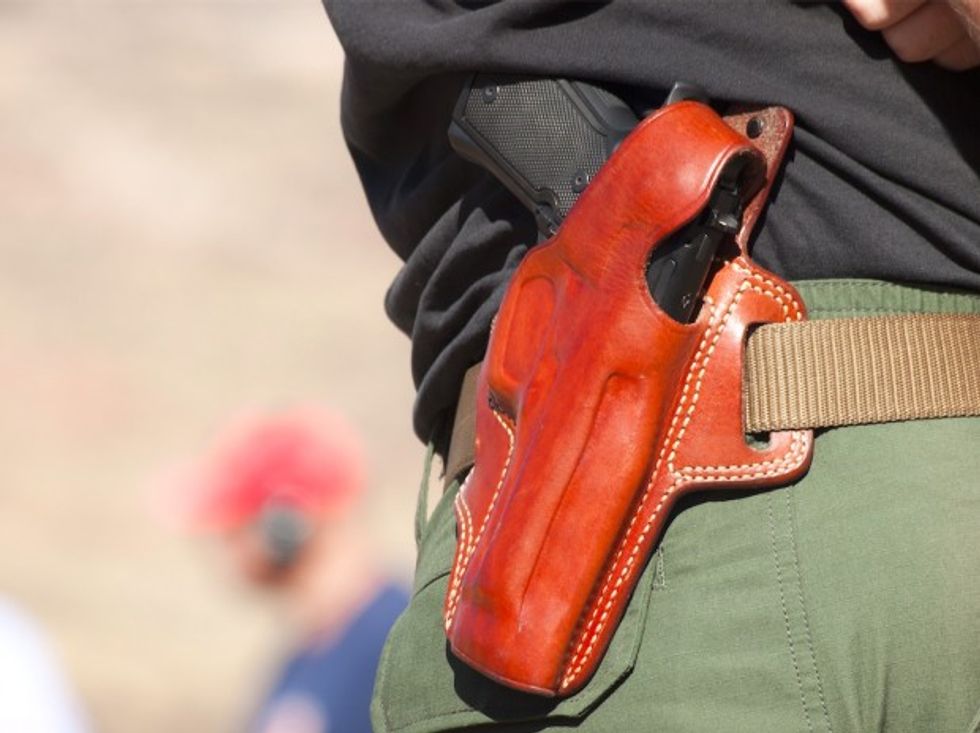
Photo credit: Shutterstock

Antonin Scalia, one of the greatest strict constitutionalists ever to sit on the Supreme Court has just died; a justice who was partially responsible for a landmark 5-4 Supreme Court decision that saved the original intent of the Second Amendment (District of Columbia et al v. Heller).
And, President Barack Obama has the constitutional right to nominate a replacement.
He has.

Merrick Garland—famous in part for his contentious relationship with the Second Amendment—has just been given the nod.
Did I mention there are scads of people salivating at the idea of seeing the Heller ruling overturned?
We’re literally just one justice away from that—whether it’s Garland or anyone else the president chooses.
Here’s the deal, people. It’s really easy to just point to the Second Amendment and say, “SEE? It’s there. End of discussion.”
And yes, technically, it really is that simple.
But, since people have spent years reading things into the Constitution that aren’t there—we have to go deeper.
Let's roll:
After all, the Second Amendment does read in part "A well-regulated Militia, being necessary to the security of a free State …”
Right—but we need to understand the definition of a militia.
Let’s see what historians Larry Schweikart and Michael Allen have to say about it:
“Over the years, the militia preface has become thoroughly (and often, deliberately) misinterpreted to imply that the framers intended citizens to bear arms only in the context of an army under the authority of the state. In fact, militias were the exact opposite of a state-controlled army: the state militias taken together were expected to serve as a counterweight to the federal army, and the further implication was that citizens were to be as well armed as the government itself.”
What’s the key there? “…militias were the exact opposite of a state controlled army.” (Which the Constitution also provided for in Article 1, Section 8, Clause 14.)
In fact, militias were the “whole people”:
"I ask, sir, what is the militia? It is the whole people, except for a few public officials." - George Mason
Pretty clear.
Let’s just stop and think about this critically here.
Given how commonplace hunting for food would have been on those days, isn’t saying that the Second Amendment was intended to protect hunting rights just as silly as an amendment today ensuring that the “rights of each citizen to go grocery shopping at Target shall not be infringed”?
This one gets people a little squeamish.
The Founders understood that there had to be counterweight; there had to be a bulwark against tyrannical, oppressive government. Noah Webster echoes this idea:
“Before a standing army can rule, the people must be disarmed; as they are in almost every kingdom of Europe. The supreme power in America cannot enforce unjust laws by the sword; because the whole body of the people are armed, and constitute a force superior to any band of regular troops that can be, on any pretence, raised in the United States.”
Let’s go back to George Mason and what he had to say about it at the Virginia Convention (emphasis mine):
“Forty years ago, when the resolution of enslaving America was formed in Great Britain,the British Parliament was advised by an artful man, who was governor of Pennsylvania, to disarm the people; that it was the best and most effectual way to enslave them; but that they should not do it openly, but weaken them, and let them sink gradually, by totally disusing and neglecting the militia.”
That said, there’s still rule of law, and people aren’t supposed to just fire from the hip (pardon the pun) willy-nilly.
Of course our Founders envisioned this in a framework of common sense and morality.
But this is key: there’s a big difference between laws about gun usage, and prohibiting gun ownership. The former prescribes (or it’s supposed to, at least) the framework within which good and lawful gun usage sits; the latter seeks to take away the right entirely.
We’ll talk more about gun laws in No. 4:
This one gets interesting. There are no limitations outlined in the Second Amendment as to the types of guns people can own.
Still, some have argued that since the “high-powered weaponry” that exists today didn’t exist at the time of the Founding, the Second Amendment couldn’t possibly be construed to include those weapons. (Enter the so-called assault weapons ban case that seems to be headed for the Supreme Court)
The late Antonin Scalia said it best in District of Columbia et al v. Heller:
“Some have made the argument, bordering on the frivolous, that only those arms in existence in the 18th century are protected by the Second Amendment. We do not interpret constitutional rights that way. Just as the First Amendment protects modern forms of communications … and the Fourth Amendment applies to modern forms of search …, the Second Amendment extends, prima facie, to all instruments that constitute bearable arms, even those that were not in existence at the time of the founding.”
And he’s absolutely right.
To be certain, there’s a difference (as Scalia also alluded) between a rifle (today given the inaccurate moniker “assault weapon”) and things like rocket launchers.
Yes, we can have a conversation about the roles the Constitution DOES give the federal government (i.e. the military) and whether or not the Second Amendment meant private citizens should have access to and use “dangerous and unusual” weapons of war—without destroying our Second Amendment rights.
To do that, however, we always have to come back to two core things:
________
Remember last week when I talked about private property ownership as an inherent human right? It’s a little hard to recognize that right (or any of our other inherent rights) without also recognizing the right a person has to self-defense.
The Founders obviously found it so vital to the preservation of liberty that they minced no words about it. “. . . the right of the people to keep and bearArms, shall not be infringed.”
So yes, it is clear. It is law. It is our right.
Now get out there—armed with the truth—and keep it alive.
Mary Ramirez is a full-time writer, creator of www.afuturefree.com(a political commentary blog), and contributor to The Chris Salcedo Show (TheBlaze Radio Network, Saturday, from noon to 3 p.m. ET). She can be reached at: afuturefree@aol.com; or on Twitter: @AFutureFree
–
TheBlaze contributor channel supports an open discourse on a range of views. The opinions expressed in this channel are solely those of each individual author.